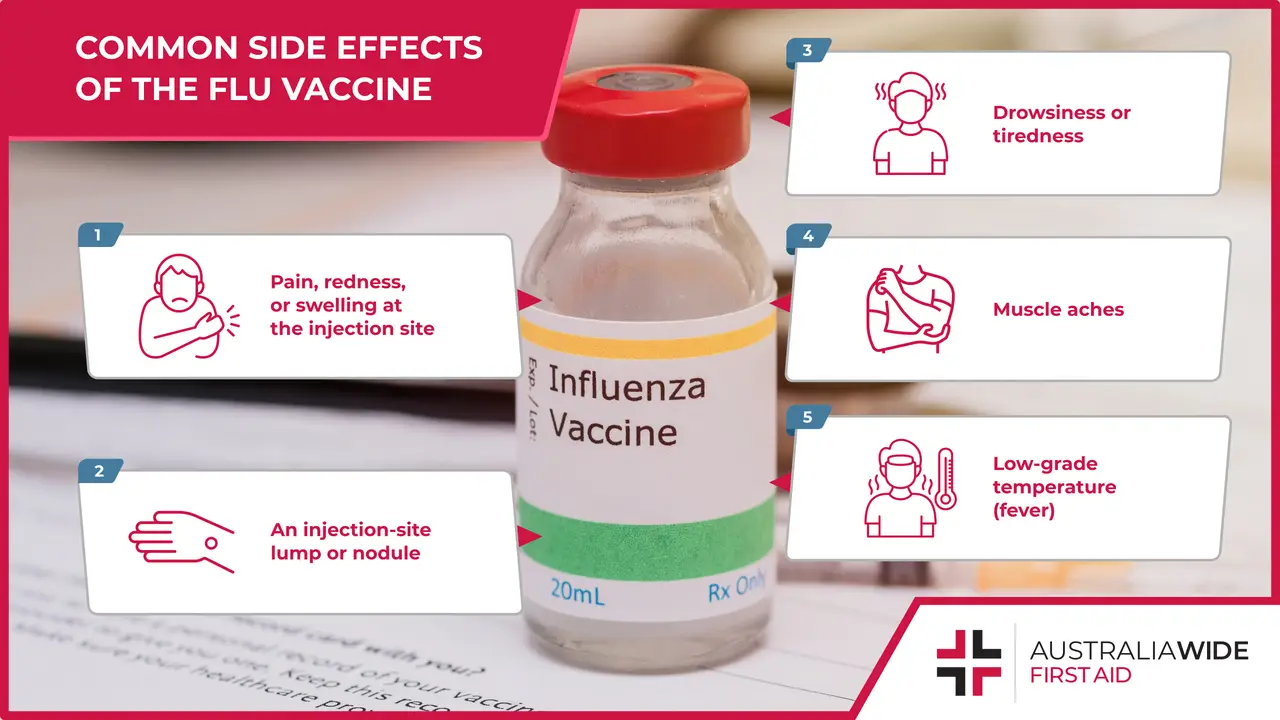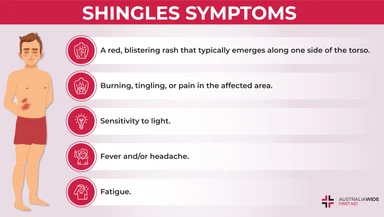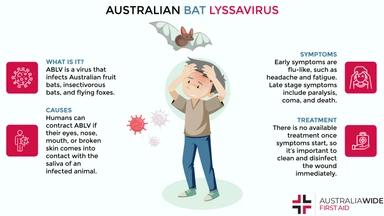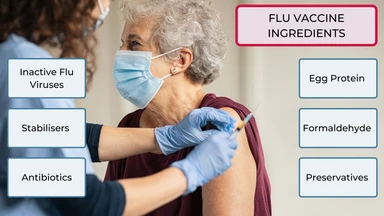Flu Vaccination Side Effects


Influenza (flu) vaccines help prevent the spread of influenza viruses.
Likewise, they help reduce the number of flu-related hospitalisations and deaths. As with most medical injections and inoculations, the flu vaccine can cause side effects ranging from mild to severe.
Today, we are going to separate fact from fiction when it comes to side effects from the flu vaccine. That way, we can help quell your concerns about proactively protecting yourself against the 2022 flu season, and receiving the flu vaccine.
It is important to firstly point out, you cannot catch the flu from the flu vaccine. This is because the flu vaccine does not contain any live flu viruses. In fact, vaccine manufacturers add formaldehyde to vials of flu vaccine to inactivate the flu virus. More details about the ingredients found in flu vaccines can be found in our Resource Library.
In saying that, it is common for people to experience mild symptoms after their flu vaccine that are similar to those experienced in the initial stages of a flu infection. This is because the flu vaccine is designed to trigger an immune response and the development of antibodies to protect against live flu viruses. As such, mild symptoms indicate that the vaccine is working correctly.
Common side effects of the flu vaccine include:
These symptoms generally only last for one to two days after receiving the flu vaccination. It is also important to note that people who received the flu virus can still contract the flu, as the flu vaccine may not protect against all the flu viruses circulating in the community. More information about common flu symptoms can be found in our Resource Library.
Though the flu vaccine generally only causes mild symptoms, if any, it can trigger severe symptoms and health conditions in people. These include:
Contrary to a few popular theories, the flu vaccine cannot increase your risk of COVID-19 or cancer. In fact, you can receive flu vaccines and COVID-19 vaccines on the same day, and the American Cancer Society recommends that cancer patients get a flu vaccine every year, provided it contains an inactive version of the flu virus.
For mild side effects from the flu vaccine, specific treatment is not usually required. Rather, there are several supportive treatment options that you can use to reduce common side effects of the flu vaccine, including:
More information about how to prevent and manage common flu symptoms can be found in our Resource Library. If you begin experiencing side effects after your flu vaccine that are unexpected, persistent, or severe, contact your doctor or immunisation provider as soon as possible or go directly to the hospital. In you begin experiencing symptoms of anaphylaxis, follow the anaphylaxis first aid outlined here.
If you have any concerns about possible side effects from the flu vaccine, talk to your doctor or immunisation provider beforehand.
The flu vaccine is a brilliant intervention for preventing the spread of the flu virus.
As the flu vaccine is designed to interact with the immune system and help develop antibodies, it can cause mild symptoms in people that mimic the early stages of a flu infection. On rare occasions, as with most products that we consume or inject, the flu vaccine can cause severe symptoms.
If you have any concerns about possible side effects arising from the flu vaccine, speak with your doctor or immunisation provider. And for more information on how to prevent, identify, and manage flu symptoms, book a first aid course near you.

October 28, 2022
Shingles is a viral infection that can occur in anyone who has had chickenpox. It's most distinct symptom is a painful, blistering rash that occurs on one side of the body. Without prompt treatment, shingles can have life-threatening complications.

August 4, 2022
The Australian Bat Lyssavirus (ABLV) forms part of the same family as the rabies virus. ABLV infects all four species of fruit bats and flying foxes in Australia. In humans, ABLV can cause respiratory difficulties, coma and, in most cases, death.

June 10, 2022
Flu viruses can change their surface structure from one year to the next. As such, new flu vaccines are developed each year. Flu vaccines comprise numerous ingredients that aid their development, purity, and efficacy.